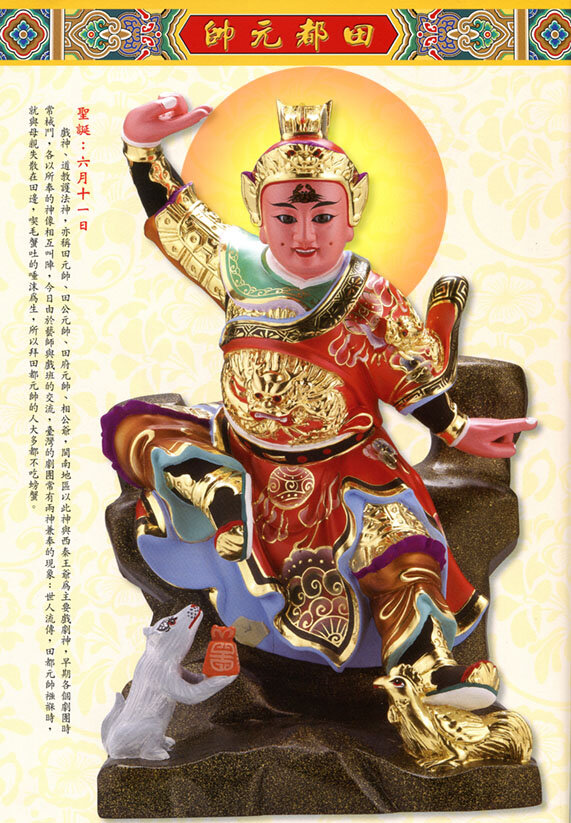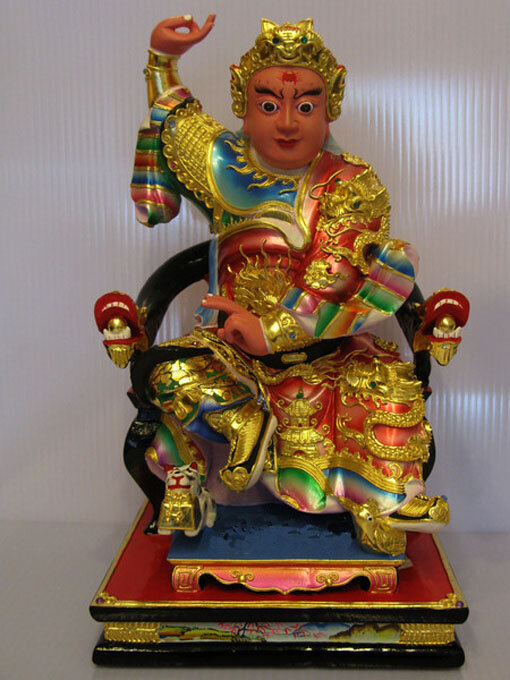Busaganashi: The Patron Saint of Goju-Ryu
/You have probably seen the figure of Busaganashi in the logos of Goju-Ryu Karate clubs throughout the world, but explanations for who he is and what he represents are often few and far between. This article is an attempt to provide some background information about the character so widely revered in Goju-Ryu, and offer an explanation as to how this came to be.
Busaganashi is known throughout the martial arts world as the Patron Saint of Goju-Ryu Karate; however, officially, Busaganashi is a lesser-known Taoist Deity of art and business from Chinese Taoism Philosophy. So how did he come to so strongly represent Goju-Ryu, regardless of affiliation, throughout Okinawa and the globe? Let us take a look at the historical background that lead to where we are today…
The Legend:
The origins of Busaganashi are embedded in both history and legend. There are two common origin myths: the Chinese version, and the Okinawan version. Both are similar, but contain slight differences. I will discuss the Okinawan version here, and reference the differences from the Chinese story below.
According to the Okinawan origin story, a young, single woman gave birth to a boy in ancient China. As raising a child out of wedlock brought about shame to the family, the woman decided to abandon her son in the forest. After three days, the woman and her family felt remorse and went back to look for the boy. When they returned to the forest, they found that the trees had surrounded the baby to protect him, and the creatures had provided food to feed him. The family realised immediately that this baby was special, and took the boy home to look after him themselves.
From an early age the boy showed signs of great intelligence and athleticism, and was recognised in his village as an outstanding musician. As an adult, he scored remarkably high on an aptitude test and was able to join the military, where he studied and refined his martial art skills.
According to the legend, one day, a tower in the Imperial Palace caught on fire, and quickly became too big for the city put out. Seeing this, Busaganashi used his dynamic martial arts breathing to extinguish the fire with a powerful exhale. In doing so, he saved the city, and was awarded the title of “Marshall of Wind and Fire”, where he became a symbol of martial arts.
The Chinese legend is slightly different. According to this story, Busaganashi was in fact a musician in the Tang court, not a martial artist. He took charge of the imperial guards when a large fire broke out, saving the palace. The Tang Emperor was very pleased, and gave him the title "Grand Marshall for Wind and Fire”.
Historical Background:
Busaganashi, or Tian Du Yuan Shuai (田都元帅) as he was known in China, was, in fact, a real person who existed during the reign of Emperor Xuan Zong in the Tang Dynasty. Based on the records of Fujian and Taiwan folktales, Tian Du/Busaganashi was an expert in both Martial Art and Music Entertainment (Opera).
Today, Busaganashi is known as the Fujianese and Taiwanese god of business, art, music, and wealth. He is worshipped by both martial artists, and music performers, especially by those in the Chinese Opera, but where does the connection between music/art and martial arts lie? Although the history is deeply embedded, I believe it can be best simplified as follows:
During the Ching Empire, when martial arts were outlawed due to political unrest, many Chinese martial artists hid in Chinese Opera groups, where Kung Fu plays a major role. Because of this close relationship between opera, music, art and Kung-Fu, the Busaganashi came to be the patron saint of martial artists too.
Pictures and statues of Busaganashi are particularly found in White Crane Kung Fu schools, as well as in business, markets, and restaurants.
Connection to Goju-Ryu:
In 1915, Chojun Miyagi-sensei, the founder of Goju-Ryu Karate, first travelled to the Fukien Province in China to further study and refine his martial arts. Here he came across images of the Busaganashi, and learnt about the history of the beloved martial arts deity. He purchased a scroll depicting Busaganashi and took it back to Okinawa.
As a Shinto practitioner, Miyagi revered the Busaganashi picture and prayed to it every day. However, during an air raid in World War II, Miyagi’s home dojo and all of its contents, including the Busaganashi scroll, were destroyed.
In the late 1940’s, sensing his master’s sorrow, one of Miyagi’s disciples, Keiyo Madanbashi, who had previously made a sketch of the Busaganashi scroll, journeyed to the Philippines to have a three dimensional statue made of the deity. Although hesitant of what his master would think, having made it without permission, upon return to Okinawa Madanbashi presented the statue to Miyagi. The gesture was so overwhelming that it is said to have brought the karate master to tears.
The hand crarved 15" tall statue now rests in the Jundokan Dojo in Okinawa, having been gifted to Ei’ichi Miyazato upon Miyagi’s death.
Aside from seeing pictures in China, it is likely that Miyagi also developed a fondness for the warrior deity through exposure to the Bubishi (the most comprehensive Kung Fu manual of ancient China, and later the most influential martial arts book in Okinawa), in which pictures of Busaganashi are found.
Indeed, Busaganashi was so important to martial arts in Okinawa that the modern Okinawan Bubishi (沖縄伝武備志) has him on its cover:
To research more about the Chinese origins of Busaganashi, or to see different pictures of him, you can Google search for the following alternative names:
Busaganashi
ブサーガナシー
九天風火院三田都元帥
三田都元師
Tian Du Yuan Shuai
Blake Turnbull










